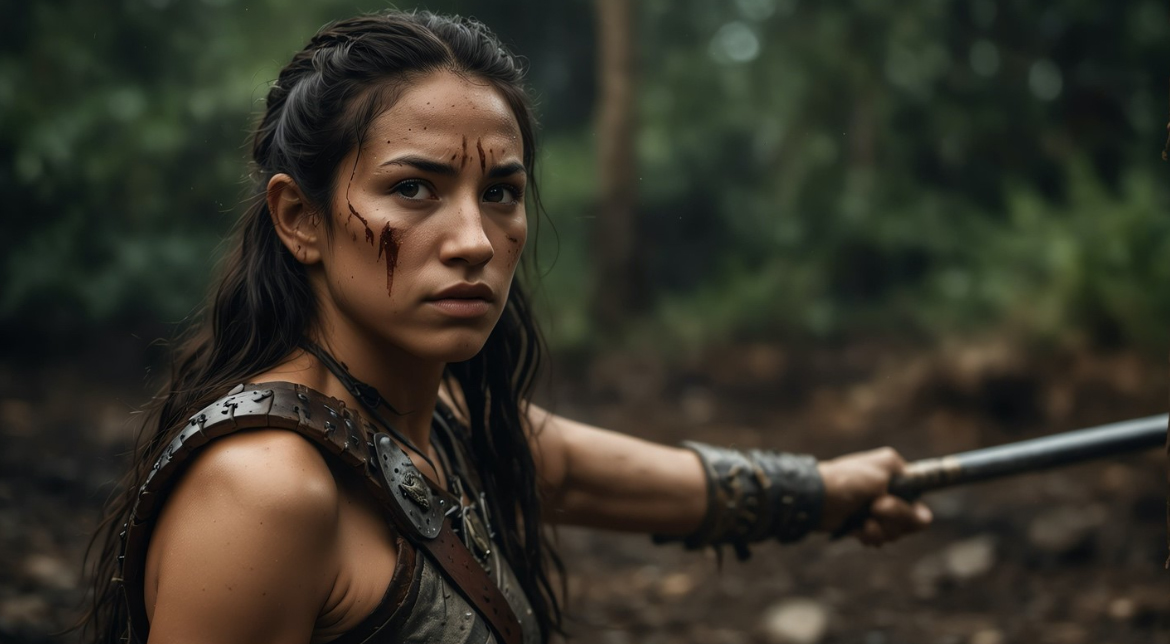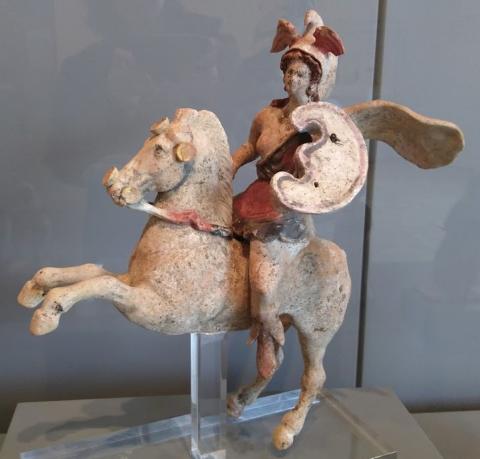
The Machlyes and Auses: Fierce Female Tribes of Ancient Libya, North Africa
Nestled between the Atlas Mountains and the Nile River, amidst wild beast and unforgiving terrain, Libya was a place of wonder and uniqueness in the ancient world. Many associate this land with the great Amazons, female warriors who proved formidable opponents to Greek armies. Although their legends are repeatedly dismissed as myth, there can be no debating that from the ancient’s perspective, this land was ruled entirely by women.
Among the tales ancient historians and the like told of North Africa, stand two rather remarkable sister tribes: the Machlyes and Auses. Both situated along Lake Tritonis in the Northwest region of Libya, they were often described as having an ambiguous gender, both masculine and feminine characteristics. Gaius Plinius Secundus, otherwise known as Pliny the Elder, referred to the Machlyes specifically as “hermaphrodites.”
…there have been found ordinary Hermaphrodites, called Androgyni, of a double nature, and resembling both sexes, male and female, who have carnal knowledge one of another interchangeably by turns.” (Pliny the Elder, VII, ii, 15)
Essentially, as Pliny claimed, the people of the Machlyes tribe could function both as men and women, intersexually, possibly even going as far as asexual reproduction, but that is not clear in his writings. Pliny further elaborated that Aristotle had said their masculine and feminine sides were split right down the middle of their bodies, with a female breast on the left and a male breast on the right. Herodotus mentioned that they wore their hair long, cut and styled in such a way that for the Machlyes, it hung down their backs, and for the Auseans, down their front. Albeit that these descriptions are unusual; perhaps, to some extent, whether accurate or not, it may reflect a vague interpretation of a culture not well-understood.
- Amazonomachy - Annihilation Of The Amazons
- The Amazons: The Real Female Fighters Dispelling Myth & Legend
A Matriarchal Society with a Brutal Tradition
As one might have guessed, the tribes of ancient Libya were matriarchal. For the Auseans in particular, marriage was not a tradition, sexual encounters were casual and non-monogamous, and the bloodline passed from mother to child. If a father was to be named, a ritual would be done on the third month of the child’s life in which the child would be compared to various men, ultimately determining who they most resembled. There is not much else known about the men and their status within society. Though, it does appear that the women were the hunters, warriors, and leaders, possibly leaving the men in a subservient position.

An ancient Greek figurine depicting an Amazon on horseback. Eskenazi Museum of Art. (Katolophyromai / Public Domain)
Every year, both the Machlyes and Ausean tribes would join together in a rite of passage festival for the young women. It was an extravaganza of survival, a ceremony dedicated to their history and their goddess. The young women would battle, not figuratively, but quite literally. The battle was done with sticks and stones, and the ones who perished from their wounds would have been deemed false virgins, unworthy to the goddess. This was a true testament to their strength and their long history as a powerful, warlike society. Only the best of the best survived, leaving the rest to shamefully die from their untreated wounds.
The virginity aspect of the rites may seem a bit confusing; after all, sexuality was unrestrictive in a classical matriarchal society. This claim of virginity was made by Herodotus, and again, may be a misinterpretation; however, it is more likely that the women had to be of a certain age or would have had to complete the rites before expressing their sexuality and procreating. If a society, as strong as these tribes were, wanted to carry on their advantageous traits, this practice may have weeded out the weak, so-to-speak. Additionally, it may be possible that the virginity aspect is tied to the goddess herself and her mythological background, since the tradition was held in her honor.





